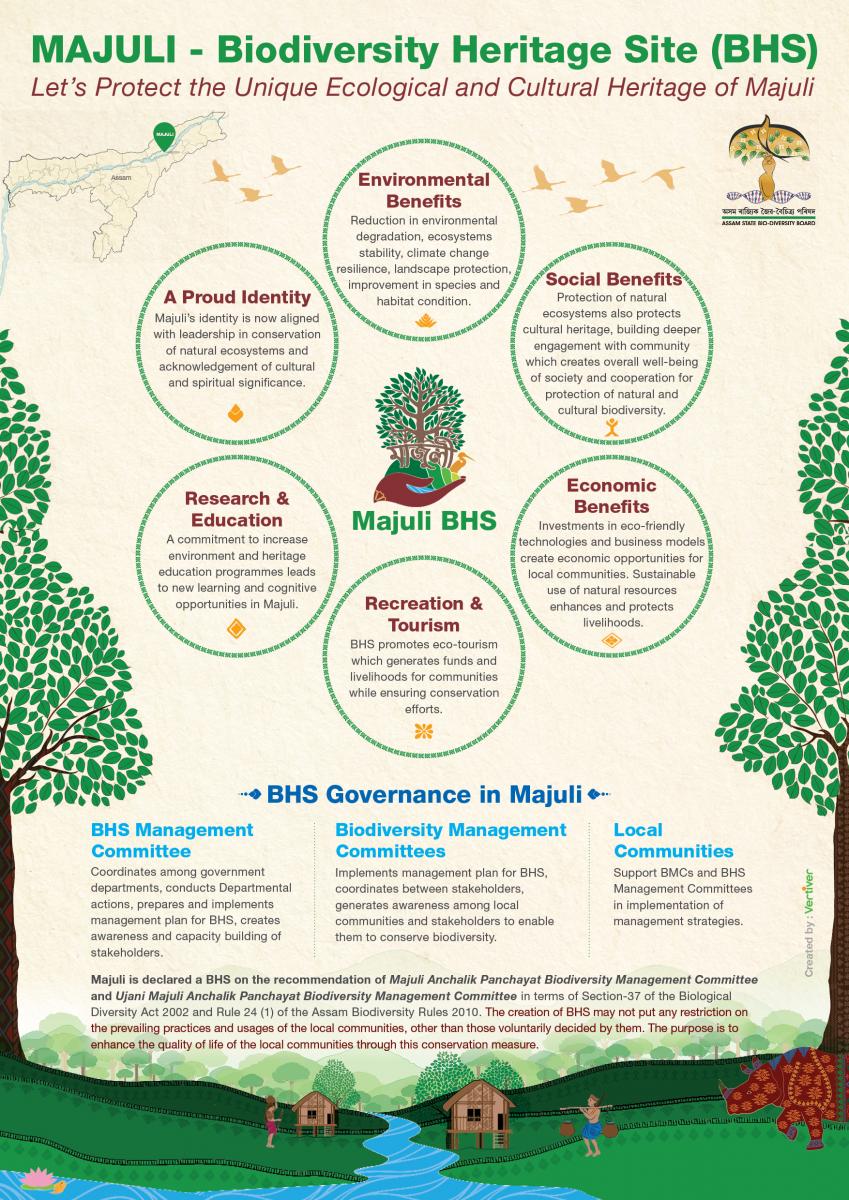Under Section-37 of Biological Diversity Act, 2002 the State Government in consultation with local bodies may notify areas of biodiversity importance as Biodiversity Heritage Sites (BHS).
The ‘Biodiversity Heritage Sites’ (BHS) are unique ecosystems having rich biodiversity comprising of any one or more of the following components:
1. Richness of wild as well as domesticated species or intra-specific categories.
2. High endemism.
3. Presence of rare and threatened species, keystone species, species of evolutionary significance.
4. Wild ancestors of domestic/cultivated species or their varieties.
5. Past pre-eminence of biological components represented by fossil beds and having significant cultural, ethical or aesthetic values and are important for the maintenance of cultural diversity, with or without a long history of human association with them. .
“The creation of BHS may not put any restriction on the prevailing practices and usages of the local communities, other than those voluntarily decided by them. The purpose of declaring BHS is to enhance the quality of life of the local communities through conservation of such sites.”
Biodiversity Heritage Site (BHS) in Assam
The Government of Assam notified Majuli as “Majuli Biodiversity Heritage Site”, vide the Assam Notification No. FRW 57/2005/Vol-II/14 dated Dispur, the 29th March, 2017.
Brief Description of the Majuli Biodiversity Heritage Site of Assam
Majuli Island in the Brahmaputra River is located about 15 km from the district headquarters at Jorhat in eastern Assam. It is perhaps the second largest river island in the world, and comprises of a large riverine island with innumerable small islets, locally called chapories. The main island is surrounded by more than twenty chapories.
Majuli with its fertile floodplains and highly productive wetlands forms identical habitat for a variety of birds including rare migratory and uncommon birds. The Island is also one among the Important Bird Areas (IBA: IN-AS-30) of Assam. Some prominent bird species found in the Island include Common Crane, Spot-billed pelican, Greater Adjutant Stork, Lesser Adjutant Stork, Pallas’s Fish Eagle, Northern Pintail, Northern Shoveller, Gadwall, Garganey, and Falcated Teal etc. Swamp Francolin and Bengal Florican also occurs in the grassland, but in low numbers occasionally.
Other major fauna includes Asian Elephant, Wild Buffalo, Barking Deer, Hog Deer, Fox, Jungle Cat, Fishing Cat and Pangolin etc. Tiger and Rhinoceros were also sighted occasionally. Gangetic River Dolphin is not uncommon. Numerous beels, streams and rivers also provide ideal habitats for fishes, turtles and amphibians.
